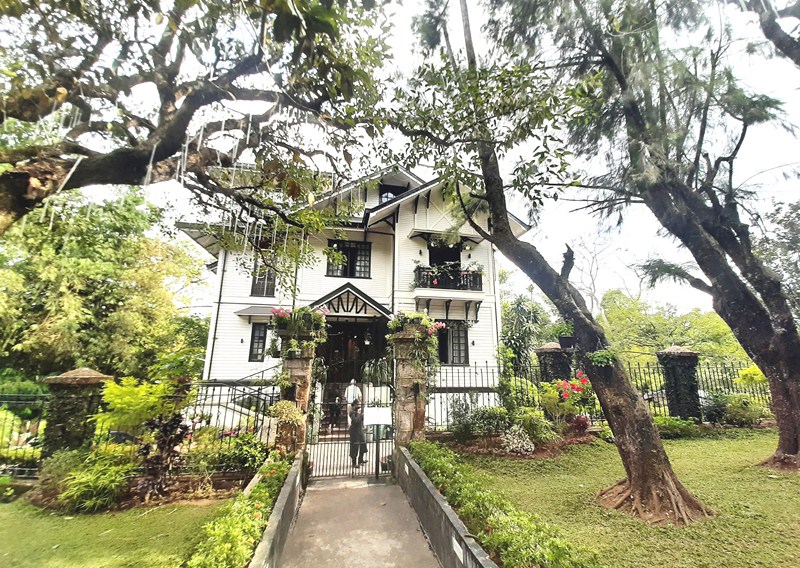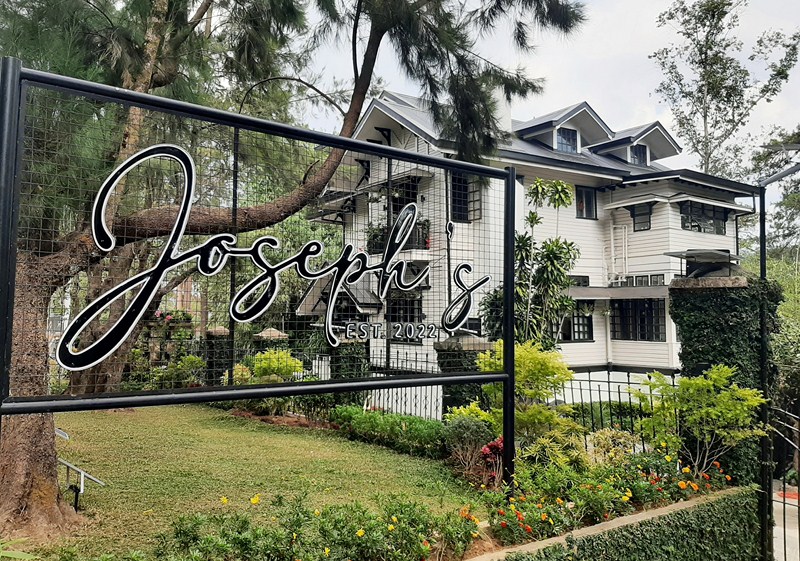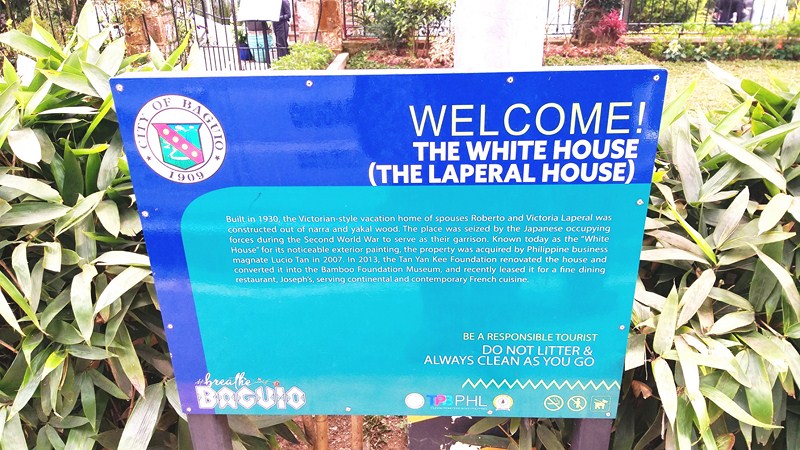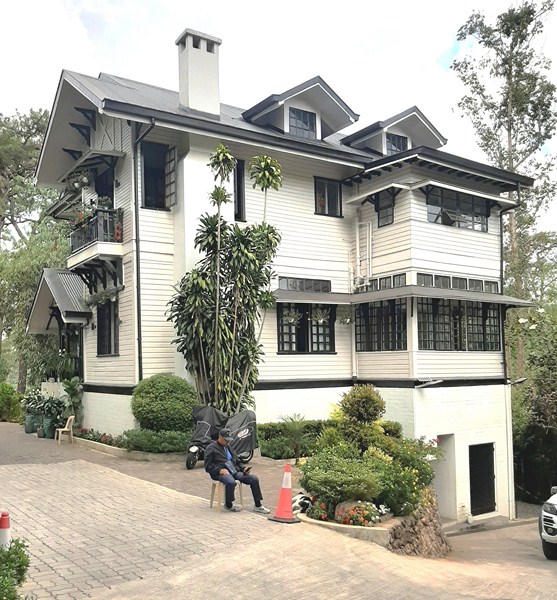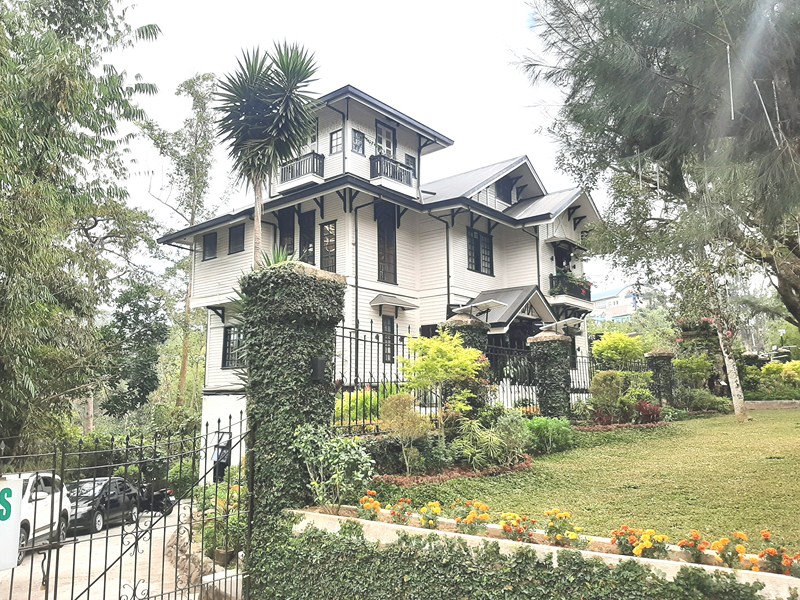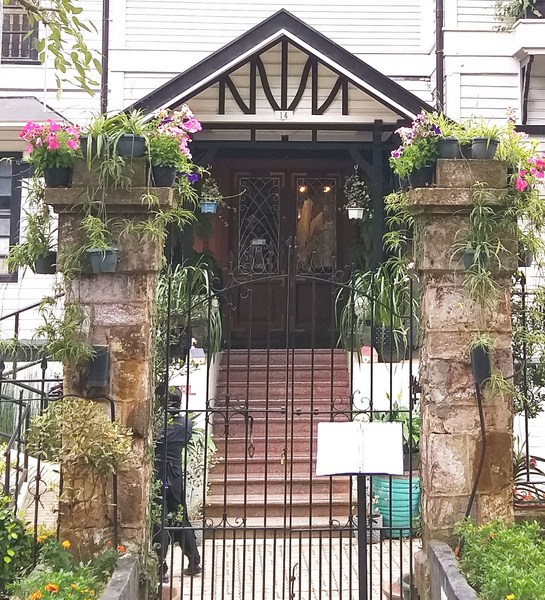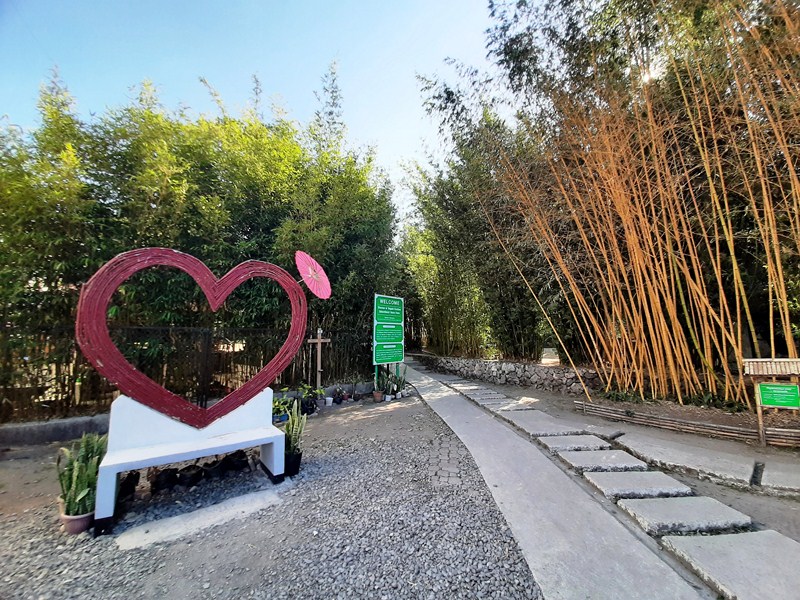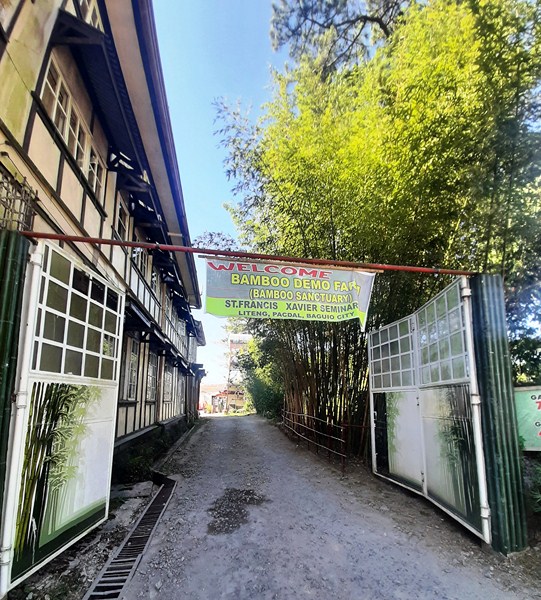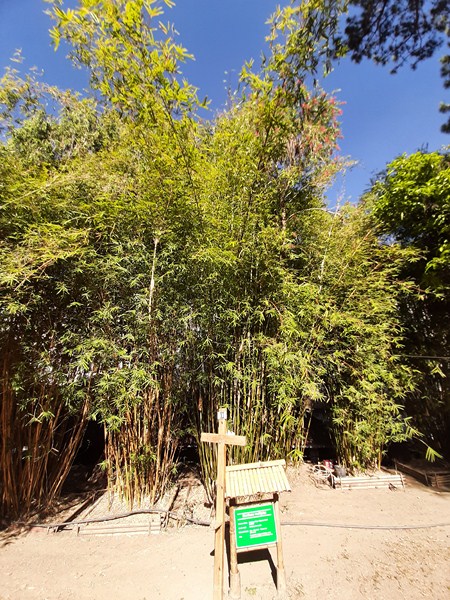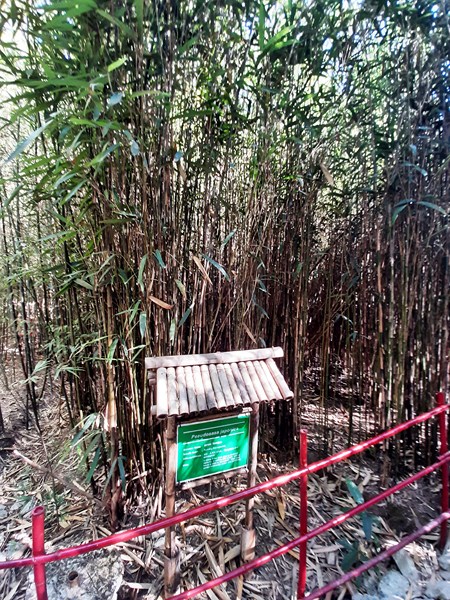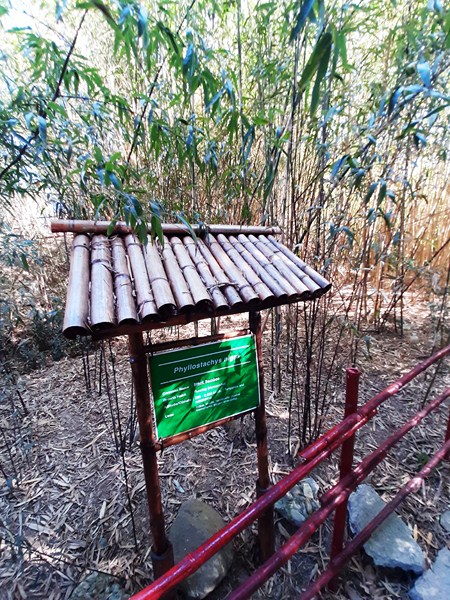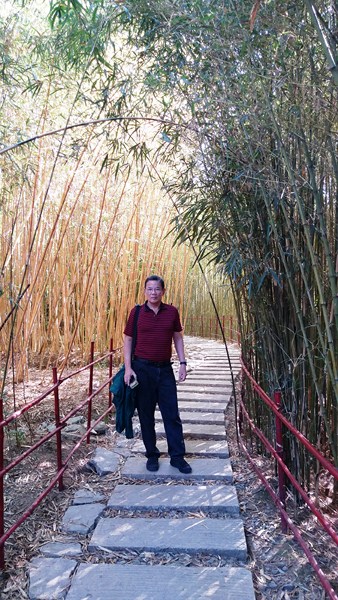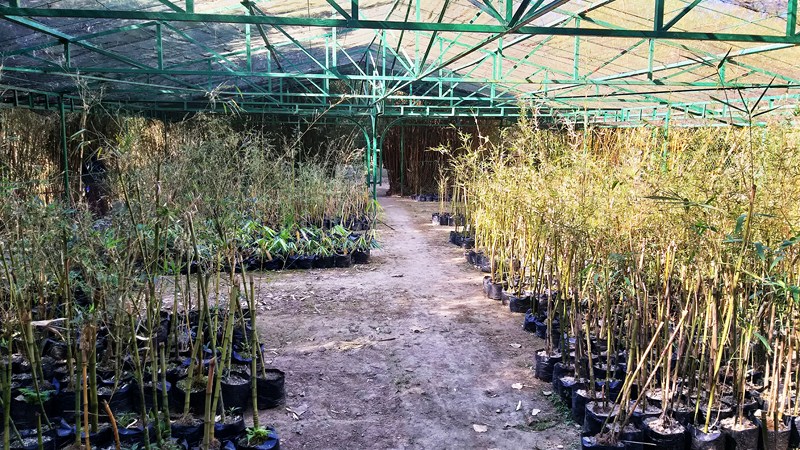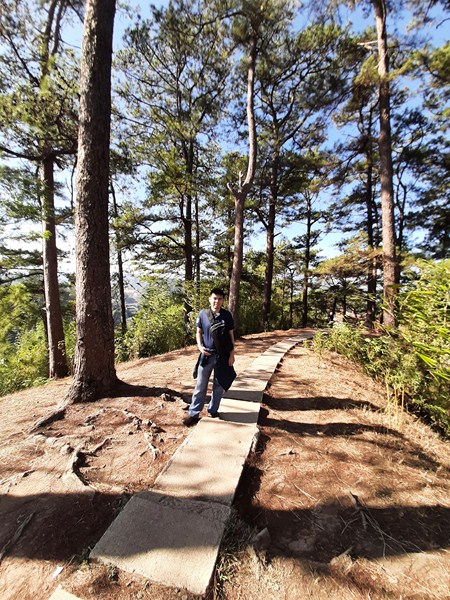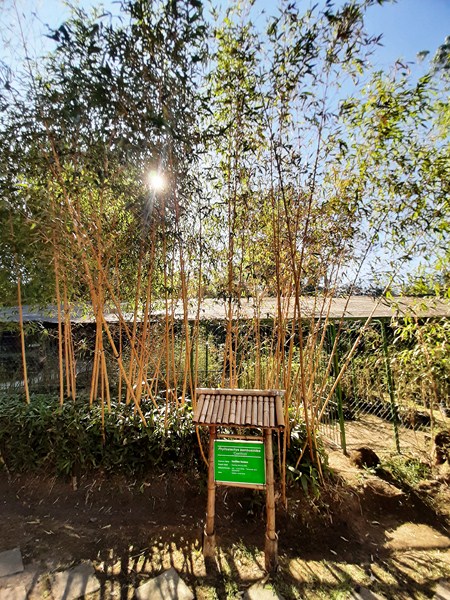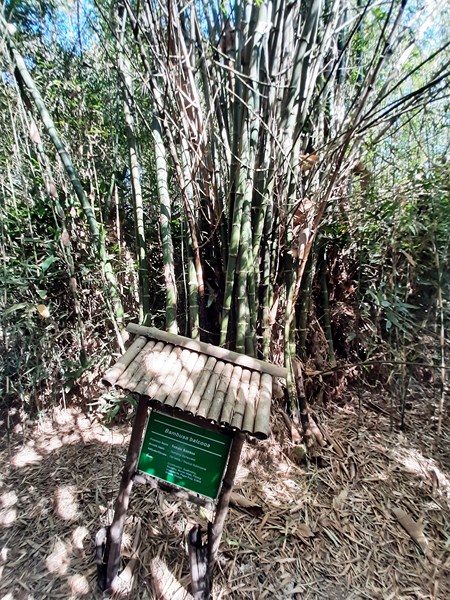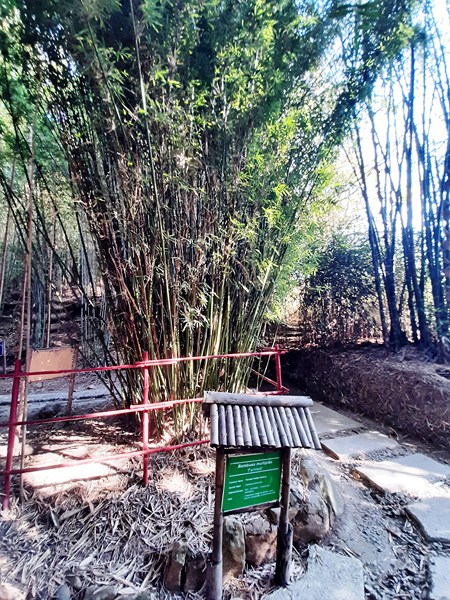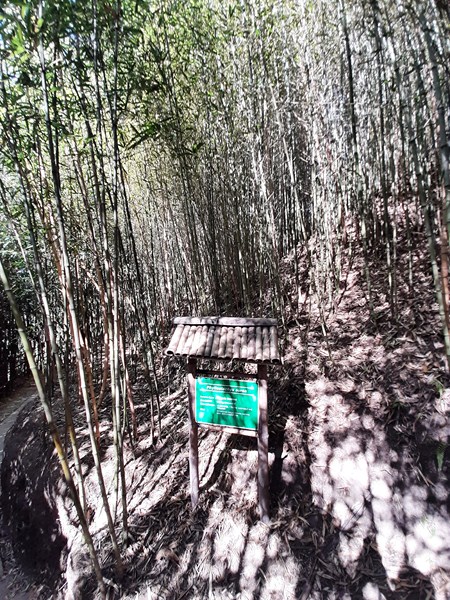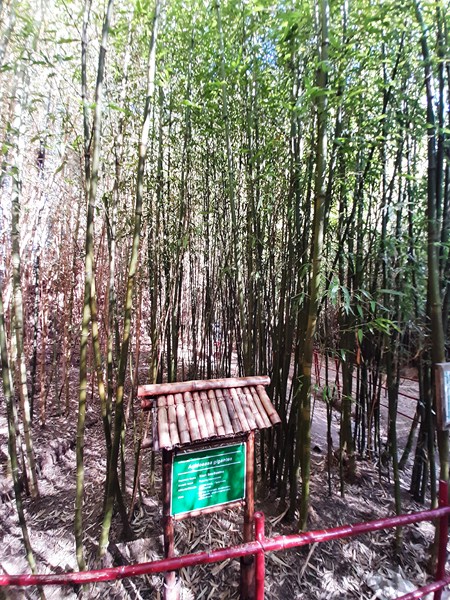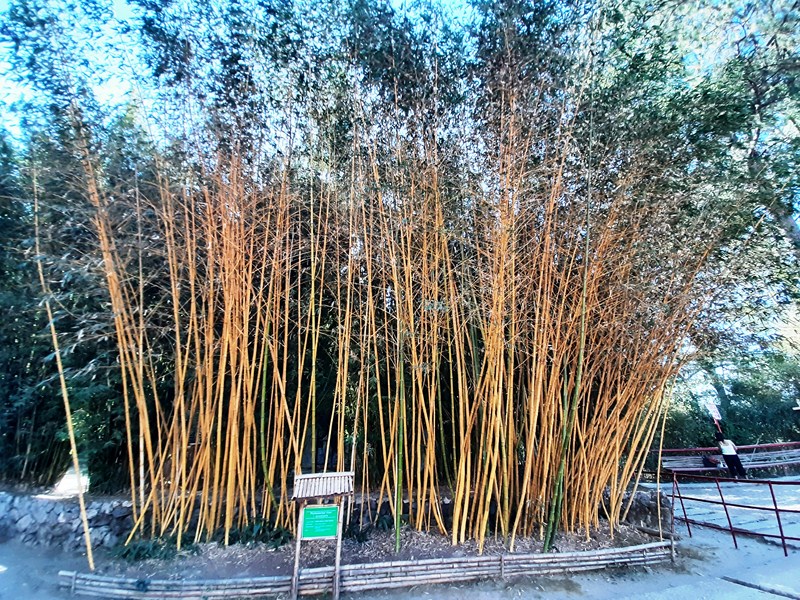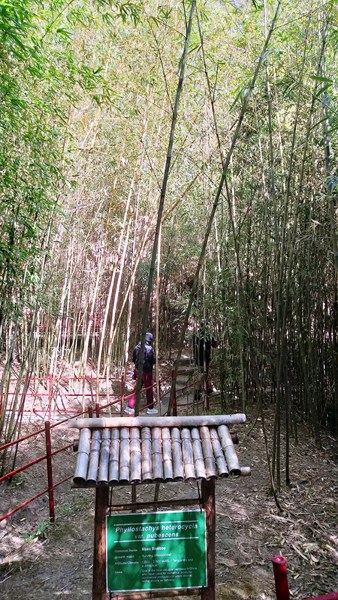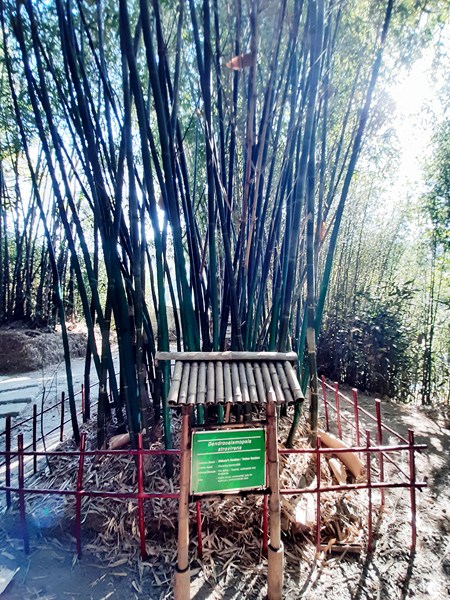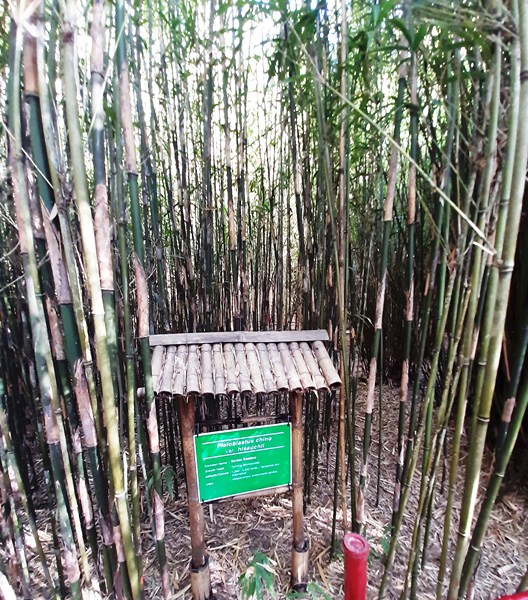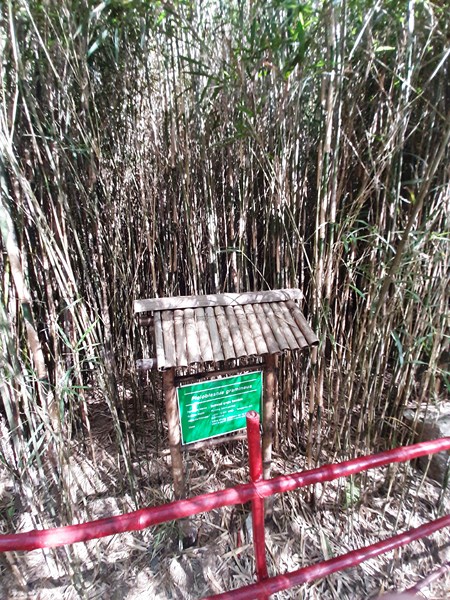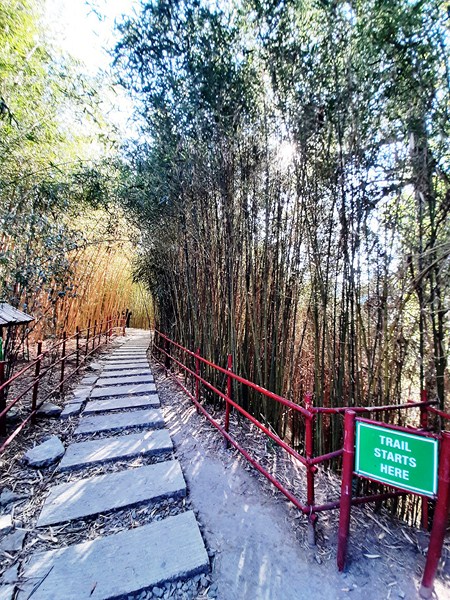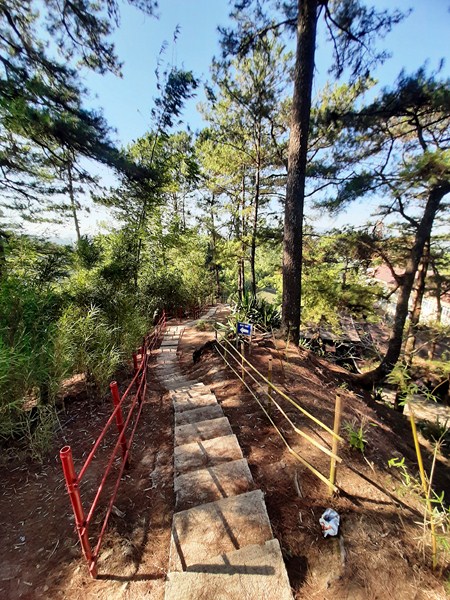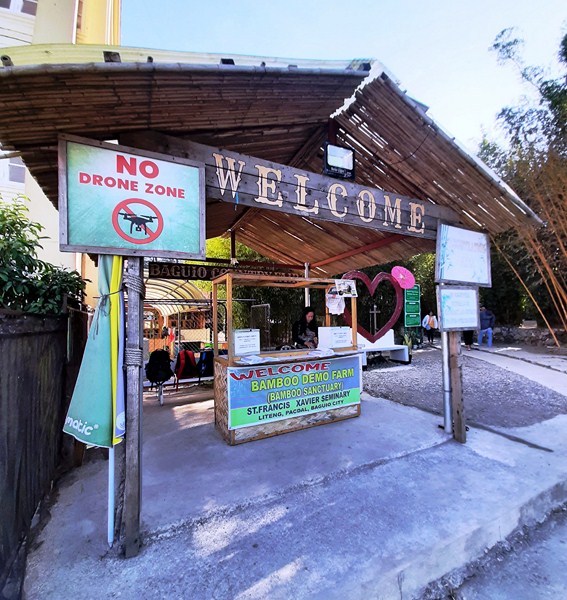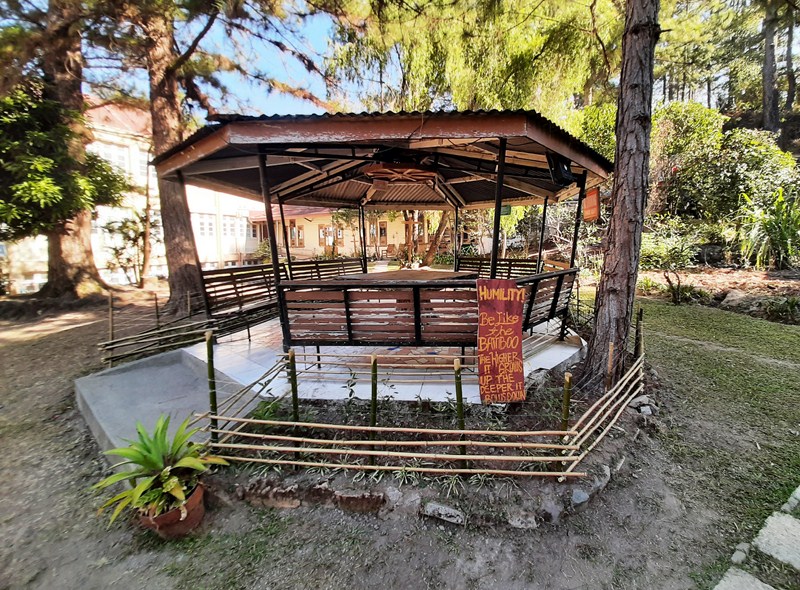The 5-hectare, multi-tiered and enchanting Mirador Heritage and Eco-Spirituality Park, one of the newest tourist attractions in Baguio, is located on top of the Jesuit-managed Mirador Hill, near the famed Our Lady of Lourdes Grotto. It houses one of two bamboo plantation sites in Baguio City (the other is the Baguio Bamboo Educational Demo Farm, within St. Francis Xavier Seminary in Purok Liteng, Brgy. Pacdal).
Check out “Our Lady of Lourdes Grotto” and “Baguio Bamboo Educational Demo Farm”
During the peak of the Covid 19 pandemic, the Jesuits managing the hill and the Our Lady of Lourdes Grotto started developing the heritage and eco-park around the rest of Mirador Hill and the park was opened in late November 2020. It has different sections and attractions and has a commanding panoramic view of the hills and valleys of the western section of Baguio City.
The park has several hiking trails that lead to different areas, with lots of signages, many Instagrammable spots and several benches and gazebos along the trail where you could sit down whenever you get too tired from walking. The walkways are paved, not with concrete, but with carefully cut blocks of rock and furnished with metal handrails on the more difficult ascents.
Some parts of the park are based on known tourist destinations in Kyoto, Japan, including the Arashiyama Bamboo Grove (its namesake is near the Tenryu-ji Temple) and the iconic red Torii Gate at the Mirador Peace Memorial (inaugurated on December 14, 2020).
The former, near the park entrance, is a gift of Caesar and Melissa Wongchuking Family. This dense bamboo forest was laid out amidst the landscaped rock gardens, providing a good shade from the piercing heat of the late morning and afternoon sun.
Here, you pass through rows of tortoise shell bamboo (Phyllostachys edulis “Heterocycla”), so called because the lower part of the bamboo, from the root to about 60 centimeters, can display the habit of shortened internodes, alternately facing each other, so that the internodes resemble a tortoise shell. In Japan, it is called kikko (Japanese word meaning “tortoise”) and is related to the edible Moso bamboo.
The latter has a hanging bell made from an unexploded and neutralized front end of a World War II bomb. The gate faces west toward the lowland and Lingayen Gulf, in nearby Pangasinan province, where American troops landed in 1945. On a clear day it is even possible to see as far as the gulf.
Here, you will encounter lots of couples and families lining up just to get a photo with the famous Japanese Torii gate. Walking further to the right side, you can see an exit gate going to the Our Lady of Lourdes Grotto.
Gardens include:
- La Storta Gardens – named after the vision of St. Ignatius de Loyola at the Chapel of La Storta, near Rome, is a gift the Christian Life Community in the Philippines and was inaugurated last May 20, 2021, the anniversary of the conversion of St. Ignatius de Loyola.
- Garden of God’s Reign, donated by Raymond and Marrot Moreno, features the Luminous Mysteries of the Rosary and was inaugurated last October 27, 2021.
- Garden of St. Therese of the Child Jesus – donated by Wilfredo “Ike” and Evelyn Eslao and Lucio and Sylvia de Ayre.
- Gardens of the First Companions – donated by the Ateneo High School Class of 1976, it has statues of St. Peter Savre, St. Francis Xavier, St. Ignatius de Loyola, St. Dominic Guzman and St. Theresa of Avila.
- Garden Shrine of Our Lady of Peace
Rock gardens include:
- Loyola Rock Garden
- Manresa Rock Garden – donated by Manuel and Juanita Tiankiansee, it was inaugurated last May 20, 2021, the anniversary of the conversion of St. Ignatius de Loyola.
- Our Lady of Montserrat Rock Garden
- Our Lady of Aranzazu Rock Gardens – donated by the Banez Family
The park also houses the Jesuit Villa, native Ifugao huts, vantage points, Beatitudes arches, pandemic healing memorial, prayer houses, Shinrin Yoku (Forest Bathing Park), Jesus Apostles Dap-ayan, Blue Moon Gate, Kapilya Nina Jesus at Maria, Cordillera Heritage Garden, Marian Salubong View Deck and Christ the Redeemer, and the Retreat House.
The tiny Cafe Inigo by Ebai, offering al fresco dining (cakes, pastries, specialty drinks, etc.) with great views, was once a long distance station of PLDT and a caretaker’s house before being repurposed.
Mirador Heritage and Eco-Spirituality Park: 15 St. Theresa Extn., Barangay Dominican Hill-Mirador, Baguio, Benguet. Tel: (074) 300-4789. Mobile number: (0906) 570-1634 (Ms. Fatima Castillo). E-mail; miradorjesuitvilla@gmail.com. Website: www.miradorjesuitvilla.com. Open daily, 6 AM to 6 PM. Admission: Php100 (adults), Php80 (senior citizens and persons with disability) and free for children below 12 years old. Pets and the bringing of food is not allowed.
How to Get There: In the city proper, take a jeepney at Kayang Street and ask to be dropped off at the Mirador Jesuit Villa Retreat House near the barangay hall of Dominican Hill-Mirador and the jeepney terminal area. Near the registration area is a parking lot (parking fee: Php25).

